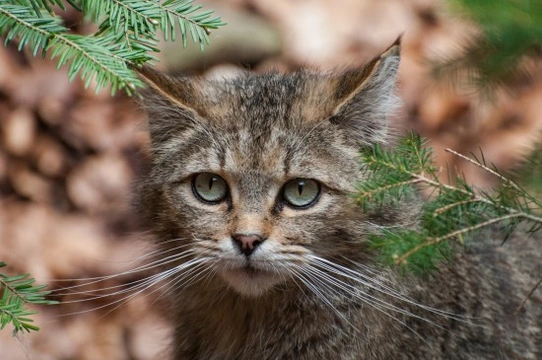
Wild, feral, tame and domestic - The difference between the four terms
Wild, feral, tame and domestic: These are four descriptive terms used to refer to animals of all types, including cats and dogs. While at first glance, the meaning of each of these words may seem obvious, it is not always so cut and dried! Cats and dogs of different species and with different histories can fit into all four categories, and it might seem as if domestic and tame are interchangeable terms, and that feral and wild are as well. However, there are distinct differences between the meanings of all four of these words, and it is worth learning a little more about each in order to better understand the natural state of pets such as dogs and cats, and how we interact with them.
Read on to learn more!
What is meant by “wild?”
When you think of a wild animal, you may think of small animals like mice, rats and garden birds, or larger animals like wolves and tigers. The definition of a wild animal is one that goes through its entire life without any need for human intervention, either directly or by means of alterations to their environment of situation. They do not rely upon people for food or their other needs, and may in fact go through their whole lifecycle without ever coming into close contact with, or even seeing, a human being.
What is meant by “feral?”
An animal that is feral is an animal from a breed or species that has either previously been domesticated and then allowed to revert back into a natural state, or that has the potential to become domesticated. This is identified on a breed by breed basis, rather than by referring to the history of any individual given animal and their interaction with people.
Both dogs and cats can be feral, and in fact, a domestic or tame dog or cat that is released back into the wild and survives to reproduce will usually revert to a feral state within just one generation.
The terms feral and stray are often used interchangeably, and from a distance, it can be difficult to tell if an animal such as a cat or dog is feral or simply living as a stray; however, the term “stray” implies a prior history of living alongside of humans, and indicates that such an animal may be able to revert to a domestic state with relative ease.
What is meant by “tame?”
Tame is often confused with domesticated, but there are significant differences between the meanings of the two terms!
A tame animal is one that may be very used to the presence of people and accept or welcome their intervention into their lives; for instance, by using them as a source of food, permitting themselves to be touched, or by developing a symbiotic relationship with living relatively closely with people.
However, while various types of animals such as garden birds may become tame enough to feed at close quarters and lose some of their fear of people, they are still considered to be a long way from becoming domesticated.
While causing a tame animal to have reliance on people for resources such as food or shelter can impede their onus and learned ability to find these things for themselves, a tame animal will nevertheless need to go through several stages of behavioural and biological modification to be able to be considered properly domesticated.
What is meant by “domesticated?”
Domestication of any given animal is a process that interferes with the natural wild lifecycle of an animal, by means of artificial selection. Humankind is adept at modifying the behaviours of certain types of animals to fit our requirements and offer benefit to people, and this often begins with a symbiotic relationship with an animal, taming them, and over the course of several generations, leads to domestication.
This process can be seen in our earliest history of domesticating dogs and cats; cats provided benefit to humans by helping to keep the rodent population under control, while dogs got food on tap and a warm space to sleep out of the deal. Dogs, with their propensity to hunt and guard, would stick close to human habitations for a free source of food, while helping to defend the land against threats, and ultimately, working alongside of human hunters.
The active domestication of animals alters them on both a mental and sometimes, physical level (selective breeding is a good example of this) as over time, the animal in question not only serves a purpose for people, but becomes reliant on us for resources such as food and shelter. Most domesticated animals that have multiple generations of history living alongside of people would not be able to thrive in the wild if released, and this is due to both learned changes and to evolutionary aspects of this progression that ultimately, breeds out the animal’s ability to fend for itself in the wild.
While dogs and cats might seem to be the perfect example of domesticated animals, even this is open to some debate! Mixed-breed cats and many pedigrees that have not been overbred or ultra-typed would generally survive just fine in the wild, as would potentially many domestic dogs!



